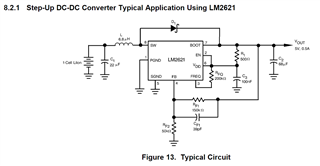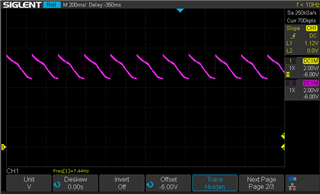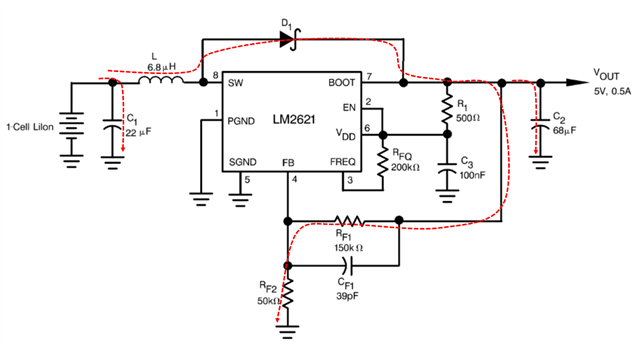Tool/software:
Hi Guys,
Set up the sample circuit breadboard style from the datasheet (Figure 13). All components used were following the schematic aside from RF1 and RF2 (100K and 22.2K).
Input Voltage: 5V
Output Voltage: ~7V

When completed the enable pin is pulled to GND (should be in sleep). I noticed that the current draw is around 50uA. According to the datasheet it should be 2.5uA.
At a loss of what could be causing a higher current draw than specified. Curious if anyone has any insight that could aid me forward. Curious if a component or a wire that is longer than ideal could be causing such issues with current or signal.
Also noted that when the enable pin is set to high, the sawtooth signal is slow until a load is present. Am curious if this is expected behavior. Please see attached image.

Any help would be much appreciated!


